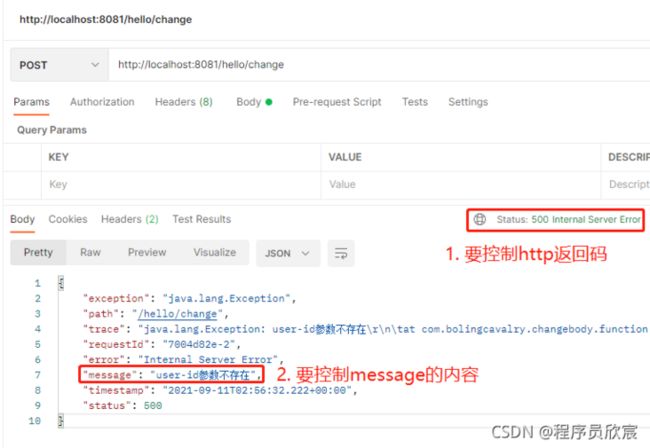- 第二十五节:Linux 运维职业规划与学习路径指南
厚衣服_3
Linux基本操作详解运维linux学习
第二十五节:Linux运维职业规划与学习路径指南随着云计算、容器化、自动化运维的快速发展,Linux运维工程师已经成为技术岗位中的重要角色之一。要想在运维领域长期发展,不仅要掌握扎实的基础技能,更要有清晰的职业规划和学习路径。一、Linux运维职业方向概览职业方向技术关键词基础运维工程师Linux、Shell、网络、服务部署、安全配置自动化运维/DevOpsAnsible、Docker、Jenki
- PCDN与边缘计算:流量处理的双赢方案
数据库
PCDN与边缘计算:流量处理的双赢方案在数字化时代,宽带流量的快速增长对传统网络架构提出了更高要求。视频、直播、云计算等应用消耗了大量带宽资源,如何高效、低成本地处理流量成为行业关注的重点。PCDN(Peer-to-PeerContentDeliveryNetwork)与边缘计算的结合,为流量优化提供了双赢解决方案。PCDN通过利用用户闲置带宽和存储资源,构建分布式网络,使内容分发更接近终端用户。
- SD-WAN在智慧工厂中的实践:云平台与边缘计算高效协作解析
北极光SD-WAN组网
边缘计算人工智能
随着工业4.0与智能制造的深入推进,智慧工厂成为现代制造业的重要发展方向。智慧工厂依托云计算与边缘计算协同处理海量数据,以实现生产过程的智能化。然而,云平台和边缘计算之间的数据传输对网络的可靠性、灵活性和实时性提出了更高要求。在此背景下,SD-WAN(软件定义广域网)技术成为解决这一问题的重要工具。本文将探讨SD-WAN技术在制造业中如何优化云平台与边缘计算的协作应用,分析其在智慧工厂场景下的具体
- 深入了解轻量云服务器:适合小型企业的高性价比选择
Clownseven
服务器运维
更多云服务器知识,尽在hostol.com在如今这个数字化飞速发展的时代,越来越多的小型企业和创业公司开始意识到云计算的重要性。尤其是轻量云服务器(LightweightCloudServer),它以其高性价比、简单易用的特点,成为了许多小型企业的首选。但问题是,面对众多云服务提供商,如何选择最适合自己企业需求的轻量云服务器?它是否真的是适合小型企业的高性价比选择呢?在本文中,我们将深入分析轻量云
- 如何选择最适合你的云存储方案:对象存储 vs 块存储 vs 文件存储
Clownseven
linux运维服务器
更多云服务器知识,尽在hostol.com在现代的云计算环境中,存储方案扮演着至关重要的角色。从初创公司到大型企业,云存储被广泛应用于数据的存储、访问与共享。你可能会问,究竟哪种存储方式最适合你的需求呢?是对象存储、块存储,还是文件存储?每种存储方式都有其独特的优势和劣势,而对于云服务器用户来说,选择合适的存储方案,往往能对性能、成本以及可扩展性等方面产生巨大的影响。让我们来仔细分析一下这三种常见
- 如何选择适合初创企业的腾讯云轻量云服务器配置
Clownseven
腾讯云服务器云计算
更多云服务器知识,尽在hostol.com初创企业面临的最大挑战之一就是成本管理。在早期阶段,企业通常没有足够的资金用于大规模的硬件投资和复杂的基础设施部署。因此,如何通过智能的技术选择在保证业务发展的同时降低成本,是每个初创企业必不可少的战略考虑。云计算作为一种新兴的技术解决方案,提供了按需付费、灵活部署和可扩展性等优势,使企业能够以更低的成本,快速获得计算、存储和网络资源。其中,腾讯云轻量云服
- AWS Lambda与RDS连接优化之旅
t0_54manong
编程问题解决手册aws云计算个人开发
在云计算的时代,AWSLambda与RDS的结合为开发者提供了高效且灵活的解决方案。然而,在实际应用中,我们常常会遇到一些性能瓶颈。本文将通过一个真实案例,探讨如何优化AWSLambda与RDS之间的连接,以提高API的响应速度。背景介绍最近,我们在AWS上部署了一个使用Dotnet6开发的API,它通过APIGateway暴露给外部,并连接到同VPC内的MySQLAuroraRDS数据库。部署前
- 【Linux命令大全】Linux虚拟化技术终极指南:从KVM到容器的深度解析
全息架构师
Linux前沿技术与应用linux运维服务器
【Linux命令大全】Linux虚拟化技术终极指南:从KVM到容器的深度解析行业洞察:全球90%的云服务基于Linux虚拟化技术!掌握这些技能可提升500%的资源利用率!本文包含180+配置案例,40张架构图,企业级虚拟化方案全公开!前言:为什么虚拟化是云计算的基础?在现代数据中心中,我们面临的核心虚拟化挑战:硬件资源的高效分割近原生性能的追求安全隔离的保障混合负载的调度跨平台的兼容性惊人数据:A
- 云计算平台架构与部署:实用技巧与代码示例
喜欢编程就关注我
云计算平台架构与部署实用技巧与代码示例代码
云计算平台架构与部署:实用技巧与代码示例摘要在数字化转型的浪潮下,云计算已成为企业和组织的核心技术之一。本文深入探讨了云计算平台的架构与部署,从分层架构、服务模型到部署方式,结合实际代码和表格示例,为开发者提供了全面的技术指南。通过本文,读者将能够更好地理解和应用云计算技术,提升系统的性能和可靠性。关键词:云计算平台;架构;部署;IaaS;PaaS;SaaS;公有云;私有云;混合云引言随着数字化转
- 速通KVM(云计算学习指南)
来自于狂人
云计算
第一章云端的变形金刚:KVM的云计算基因1.1云计算与KVM的共生关系想象一下,你有一台魔法服务器,它能像变形金刚一样随时分解成多台独立的小服务器,又能瞬间合体恢复原状——这就是KVM在云计算中扮演的角色。作为Linux内核的原生虚拟化引擎,KVM完美诠释了云计算的三大核心特性:KVM能力KVM能力KVM能力云计算核心需求资源池化弹性伸缩安全隔离将物理服务器拆分为多个虚拟机毫秒级虚拟机创建/销毁硬
- 18、探索边缘计算与面向能力的架构
info6
边缘计算面向能力的架构COA
探索边缘计算与面向能力的架构1.边缘计算的定义与特性边缘计算是指在数据生成或消费的上下文中进行计算。这种计算方式与云计算有着本质的区别,云计算将计算资源与物理上下文解耦,以便在不同的场景中高效共享。边缘计算则紧密耦合于物理环境,旨在提供即时响应,处理现实世界的数据。边缘计算的关键特性边缘计算具有以下几个关键特性:上下文中的计算:边缘计算强调与物理世界的联系,响应物理世界的数据,通常旨在提供即时响应
- 蜂鸟云平台大更新:地图空间定价重塑与功能全面升级
蜂鸟视图fengmap
信息可视化蜂鸟云地图编辑器地图绘制工具室内外地图一体化智慧园区蜂鸟视图
1.引言随着云计算、大数据以及人工智能技术的快速发展,企业对云平台的需求日益增长。蜂鸟云平台作为一款创新性的地图服务平台,已逐渐成为众多企业、政府及科研机构的核心依赖。为了更好地满足用户需求,提高平台的市场竞争力,蜂鸟云平台定期进行功能更新与优化。2024年9月21日,蜂鸟云平台将在晚上20:00至24:00进行一轮重要的系统更新。本次更新的核心内容包括地图空间的重新定价与功能优化,涉及制图、微程
- VLLM:虚拟大型语言模型(Virtual Large Language Model)
大霸王龙
语言模型人工智能自然语言处理
VLLM:虚拟大型语言模型(VirtualLargeLanguageModel)VLLM指的是一种基于云计算的大型语言模型的虚拟实现。它通常是指那些由多个服务器组成的分布式计算环境中的复杂机器学习模型,这些模型能够处理和理解大量的文本数据。VLLM的核心是“大型语言模型”,这是一种通过深度神经网络训练的算法,能够在理解和生成人类语言方面表现出极高的能力。解释:虚拟:意味着这个模型不是在单个物理设备
- 速通Ceph分布式存储(含超详细图解)
来自于狂人
云计算
前言云计算存储架构图示例存储节点集群RAID控制层物理存储层分布式存储管理层存储接口层接入层OSD主机1OSD主机2OSD主机N磁盘1磁盘2磁盘3磁盘4磁盘5磁盘6RAID0/10/5RAID控制器1RAID0/10/5RAID控制器2RAID0/10/5RAID控制器NMonitor集群大脑OSD数据守护进程MDS元数据服务对象存储块存储文件存储对象网关RBDMDS客户端接入层存储接口层分布式存
- XEN和KVM云计算虚拟化技术
电脑天空
视频教程云计算kvmxen
一、XEN和KVM云计算虚拟化技术01_虚拟化技术基础原理详解02_Xen虚拟化及DomU的实现03_Xen基于iscsi共享实现实时迁移04_kvm虚拟化下载链接:链接:http://pan.baidu.com/s/1milQbNU密码:90ct二、xen虚拟化技术实战详解视频教程01-xen基本原理02-xen安装与使用详解03-xen基本原理及安装使用总结04-xen的使用详解05-xen的
- Python 解析 Ansible 自动化运维的最佳实践
逻辑混乱的哲学家
运维pythonansible
```htmlPython解析Ansible自动化运维的最佳实践Python解析Ansible自动化运维的最佳实践随着云计算和容器技术的快速发展,自动化运维成为了现代IT基础设施管理的重要组成部分。Ansible是一款流行的开源自动化工具,它以简洁的语法和强大的功能赢得了广大开发者的青睐。本文将介绍如何使用Python解析AnsiblePlaybook文件,并结合实际案例展示最佳实践。什么是Ans
- Python 在云原生(Cloud Native)中的适用性
逻辑混乱的哲学家
python云原生开发语言
```htmlPython在云原生(CloudNative)中的适用性Python在云原生(CloudNative)中的适用性随着云计算和容器化技术的快速发展,云原生(CloudNative)已经成为现代软件开发的重要趋势。云原生架构强调以容器、微服务、动态编排为核心的技术理念,旨在提高系统的弹性和可扩展性。在这样的背景下,Python作为一种功能强大且灵活的语言,在云原生领域展现出了显著的优势。
- 合规视角下银行智能客服风险防控
AI 智能服务
智能客服人工智能AIGC数据库chatgpt
1.AI驱动金融变革的政策与技术背景政策导向:我国《新一代人工智能发展规划》明确提出发展智能金融,要求:构建金融大数据平台,提升多媒体数据处理能力;创新智能金融产品与服务形态;推广智能客服、监控等技术应用;建立智能风控预警体系。技术支撑:云计算、大数据技术成熟为AI发展奠定了基础。深度学习算法的突破则引爆了本轮AI浪潮,显著提升了复杂任务处理精度,进而推动了计算机视觉、机器学习、自然语言处理(NL
- 云原生架构实战:打造高可用、可扩展的现代应用体系
一ge科研小菜菜
云原生云原生架构
个人主页:一ge科研小菜鸡-CSDN博客期待您的关注一、引言:从传统架构迈向云原生的必然趋势随着业务不断扩展与互联网技术飞速发展,传统的单体应用架构已经难以满足现代企业对敏捷交付、高可用性、弹性伸缩、运维自动化等要求。云计算提供了弹性资源,而“云原生”则是在这之上构建现代应用的核心范式。什么是云原生(CloudNative)?CNCF给出的定义:云原生技术有助于各组织在私有云、公有云和混合云中构建
- k8s-diagrams:直观展现Kubernetes架构的利器
汤力赛Frederica
k8s-diagrams:直观展现Kubernetes架构的利器k8s-diagramsAcollectionofkubernetes-relateddiagrams项目地址:https://gitcode.com/gh_mirrors/k8s/k8s-diagrams在当今的云计算时代,Kubernetes(简称K8s)作为容器编排的事实标准,其复杂而灵活的架构常常令人感到难以理解。k8s-di
- 深入解析企业级SSD开发的核心挑战:IO路径与NAND管理的精妙博弈
Richard_Lynn
SSDarmSSDFW顶层架构要素SSDc语言
在数据中心、云计算和高端存储领域,企业级SSD的性能、可靠性和寿命直接决定了关键业务的成败。其开发绝非消费级产品的简单升级,而是一场在IO路径和NAND物理特性之间寻求极致平衡的复杂系统工程。本文深入剖析其核心架构元素——IO路径和NAND管理(NMT)面临的关键挑战与设计哲学。IO路径:高性能与数据一致性的高压线作为主机与NAND闪存间的数据高速公路,IO路径的设计关乎SSD的吞吐量、延迟和稳定
- 探秘阿里云专有宿主机:解锁企业上云新姿势
云资源服务商
阿里云云计算
阿里云专有宿主机初印象在云计算迅猛发展的当下,越来越多的企业选择将业务迁移至云端,以获取更高效、灵活且低成本的计算资源。然而,不同企业的需求千差万别,部分企业对资源的隔离性、合规性以及自定义配置有着严苛要求,普通的云计算服务难以充分满足。正是在这样的背景下,阿里云专有宿主机应运而生。深度剖析:专有宿主机独特优势物理资源独占,隔离性拉满阿里云专有宿主机最大的亮点之一,便是单租户对物理资源的独占。在专
- GaussDB数据库多租户技术:云原生时代的资源隔离与高效共享方案
喜酱的探春
gaussdb数据库云原生
GaussDB数据库多租户技术:云原生时代的资源隔离与高效共享方案引言在云计算时代,多租户技术已成为数据库服务的核心能力之一。它通过逻辑隔离实现资源的高效共享,既能满足企业对数据安全与定制化的需求,又能提升资源利用率、降低运营成本。华为云GaussDB数据库基于分布式架构与云原生理念,打造了全栈多租户解决方案,为SaaS服务商、企业级用户及开发者提供了灵活、安全、可扩展的数据库服务能力。一、多租户
- (云计算HCIP)HCIP全笔记(十六)本篇介绍虚拟机VM特性:内存复用、虚拟机克隆、虚拟机快照、NUMA架构、资源迁移、磁盘扩容、HA集群迁移、VNC登录...
凉凉心.
从0开始云计算(HCIP)云计算架构华为HCIP虚拟机特性内存复用NUMA技术磁盘扩容
集群特性集群把一组主机组合起来形成一个整体,向用户提供资源的方式(计算资源、存储资源、网络资源)好处:当一台主机发生宕机情况后,该主机上可以改用HA技术将宕机主机的虚拟机转移至其他正常运行的主机上。坏处:当虚拟机业务过大,传输虚拟机将会出现停机传输的情况,等虚拟机传输至新主机后,业务才可以恢复,但总体利大于弊HA集群的高可用特性,客服单台主机的局限性,做到当某台物理主机出现故障时,业务不中断或中断
- 物联网与AI驱动的智能宿舍管理解决方案
本文还有配套的精品资源,点击获取简介:智能宿舍管理系统通过物联网、云计算和人工智能技术相结合,提高宿舍管理效率和学生住宿体验。该系统集成了智能门锁、传感器、能源管理系统等硬件设备,并与软件平台结合实现远程监控、自动化控制和数据分析。它还包含了实时监控、数据处理、远程操作、智能分析、异常检测和用户画像等功能,以确保高效管理、安全性和个性化服务。此外,系统设计注重加密通信、访问控制和隐私保护,以保障数
- 无服务器架构(Serverless):构建高效的事件驱动应用
一碗黄焖鸡三碗米饭
云原生技术与实践云原生架构后端
无服务器架构(Serverless):构建高效的事件驱动应用在传统的IT架构中,开发者需要亲自管理服务器的部署、扩展、监控和维护。随着云计算的普及,这种管理工作逐渐被托管给云服务商,开发者只需专注于业务逻辑。这一转变催生了无服务器架构(Serverless),它不仅简化了基础设施管理,也为开发者提供了更高效、更灵活的方式来构建和部署应用。本文将深入探讨无服务器计算模型,分析其优势、应用场景,并详细
- 【面试系列】云计算工程师 高频面试题及详细解答
野老杂谈
全网最全IT公司面试宝典面试云计算职场和发展
欢迎来到我的博客,很高兴能够在这里和您见面!欢迎订阅相关专栏:⭐️全网最全IT互联网公司面试宝典:收集整理全网各大IT互联网公司技术、项目、HR面试真题.⭐️AIGC时代的创新与未来:详细讲解AIGC的概念、核心技术、应用领域等内容。⭐️全流程数据技术实战指南:全面讲解从数据采集到数据可视化的整个过程,掌握构建现代化数据平台和数据仓库的核心技术和方法。文章目录常见的初级面试题1.什么是云计算?2.
- Java 老矣,尚能饭否?
琢磨先生David
java开发语言
引言:编程语言的“青铜时代”与“白银时代”1995年,Java以“一次编写,到处运行”的跨平台宣言横空出世,如同古希腊神话中的赫拉克勒斯,在企业级开发的奥林匹斯山上打下一片江山。二十多年后的今天,当Python、Go、Rust等新兴语言如特洛伊木马般渗透进云计算、AI等新战场时,Java的王座似乎出现了裂痕。但正如古罗马诗人维吉尔在《埃涅阿斯纪》中所写:“命运给予的考验,往往是伟大史诗的序章。”J
- 10个最佳 Python 脚本,助您在 AWS 中自动化日常任务系列
云攀登者-望正茂
云原生devopsaws自动化python
提升生产力并降低成本:使用这些必备的Python脚本自动执行日常AWS任务随着企业的发展,其基础设施和云管理需求也随之增长。亚马逊网络服务(AWS)提供了强大的云计算工具,但手动管理日常任务可能既耗时又容易出错。使用Python实现自动化可以简化重复的AWS任务,帮助您高效安全地管理资源。本文将介绍10个用于自动执行日常AWS任务的最佳Python脚本。这使您能够专注于战略计划,同时保持较低的成本
- 大数据时代:如何构建高效的数据中台架构?
AI天才研究院
ChatGPT实战ChatGPTAI大模型应用入门实战与进阶大数据架构ai
大数据时代:如何构建高效的数据中台架构?关键词:数据中台、架构设计、数据治理、数据服务、微服务架构、云计算、大数据技术摘要:在企业数字化转型加速的背景下,数据中台作为连接数据资源与业务应用的核心枢纽,已成为释放数据价值的关键基础设施。本文从数据中台的核心概念出发,系统解析其技术架构与实施路径,涵盖数据采集、存储计算、治理服务等核心模块的设计原理。通过Python代码示例演示数据清洗与服务接口开发,
- 枚举的构造函数中抛出异常会怎样
bylijinnan
javaenum单例
首先从使用enum实现单例说起。
为什么要用enum来实现单例?
这篇文章(
http://javarevisited.blogspot.sg/2012/07/why-enum-singleton-are-better-in-java.html)阐述了三个理由:
1.enum单例简单、容易,只需几行代码:
public enum Singleton {
INSTANCE;
- CMake 教程
aigo
C++
转自:http://xiang.lf.blog.163.com/blog/static/127733322201481114456136/
CMake是一个跨平台的程序构建工具,比如起自己编写Makefile方便很多。
介绍:http://baike.baidu.com/view/1126160.htm
本文件不介绍CMake的基本语法,下面是篇不错的入门教程:
http:
- cvc-complex-type.2.3: Element 'beans' cannot have character
Cb123456
springWebgis
cvc-complex-type.2.3: Element 'beans' cannot have character
Line 33 in XML document from ServletContext resource [/WEB-INF/backend-servlet.xml] is i
- jquery实例:随页面滚动条滚动而自动加载内容
120153216
jquery
<script language="javascript">
$(function (){
var i = 4;$(window).bind("scroll", function (event){
//滚动条到网页头部的 高度,兼容ie,ff,chrome
var top = document.documentElement.s
- 将数据库中的数据转换成dbs文件
何必如此
sqldbs
旗正规则引擎通过数据库配置器(DataBuilder)来管理数据库,无论是Oracle,还是其他主流的数据都支持,操作方式是一样的。旗正规则引擎的数据库配置器是用于编辑数据库结构信息以及管理数据库表数据,并且可以执行SQL 语句,主要功能如下。
1)数据库生成表结构信息:
主要生成数据库配置文件(.conf文
- 在IBATIS中配置SQL语句的IN方式
357029540
ibatis
在使用IBATIS进行SQL语句配置查询时,我们一定会遇到通过IN查询的地方,在使用IN查询时我们可以有两种方式进行配置参数:String和List。具体使用方式如下:
1.String:定义一个String的参数userIds,把这个参数传入IBATIS的sql配置文件,sql语句就可以这样写:
<select id="getForms" param
- Spring3 MVC 笔记(一)
7454103
springmvcbeanRESTJSF
自从 MVC 这个概念提出来之后 struts1.X struts2.X jsf 。。。。。
这个view 层的技术一个接一个! 都用过!不敢说哪个绝对的强悍!
要看业务,和整体的设计!
最近公司要求开发个新系统!
- Timer与Spring Quartz 定时执行程序
darkranger
springbean工作quartz
有时候需要定时触发某一项任务。其实在jdk1.3,java sdk就通过java.util.Timer提供相应的功能。一个简单的例子说明如何使用,很简单: 1、第一步,我们需要建立一项任务,我们的任务需要继承java.util.TimerTask package com.test; import java.text.SimpleDateFormat; import java.util.Date;
- 大端小端转换,le32_to_cpu 和cpu_to_le32
aijuans
C语言相关
大端小端转换,le32_to_cpu 和cpu_to_le32 字节序
http://oss.org.cn/kernel-book/ldd3/ch11s04.html
小心不要假设字节序. PC 存储多字节值是低字节为先(小端为先, 因此是小端), 一些高级的平台以另一种方式(大端)
- Nginx负载均衡配置实例详解
avords
[导读] 负载均衡是我们大流量网站要做的一个东西,下面我来给大家介绍在Nginx服务器上进行负载均衡配置方法,希望对有需要的同学有所帮助哦。负载均衡先来简单了解一下什么是负载均衡,单从字面上的意思来理解就可以解 负载均衡是我们大流量网站要做的一个东西,下面我来给大家介绍在Nginx服务器上进行负载均衡配置方法,希望对有需要的同学有所帮助哦。
负载均衡
先来简单了解一下什么是负载均衡
- 乱说的
houxinyou
框架敏捷开发软件测试
从很久以前,大家就研究框架,开发方法,软件工程,好多!反正我是搞不明白!
这两天看好多人研究敏捷模型,瀑布模型!也没太搞明白.
不过感觉和程序开发语言差不多,
瀑布就是顺序,敏捷就是循环.
瀑布就是需求、分析、设计、编码、测试一步一步走下来。而敏捷就是按摸块或者说迭代做个循环,第个循环中也一样是需求、分析、设计、编码、测试一步一步走下来。
也可以把软件开发理
- 欣赏的价值——一个小故事
bijian1013
有效辅导欣赏欣赏的价值
第一次参加家长会,幼儿园的老师说:"您的儿子有多动症,在板凳上连三分钟都坐不了,你最好带他去医院看一看。" 回家的路上,儿子问她老师都说了些什么,她鼻子一酸,差点流下泪来。因为全班30位小朋友,惟有他表现最差;惟有对他,老师表现出不屑,然而她还在告诉她的儿子:"老师表扬你了,说宝宝原来在板凳上坐不了一分钟,现在能坐三分钟。其他妈妈都非常羡慕妈妈,因为全班只有宝宝
- 包冲突问题的解决方法
bingyingao
eclipsemavenexclusions包冲突
包冲突是开发过程中很常见的问题:
其表现有:
1.明明在eclipse中能够索引到某个类,运行时却报出找不到类。
2.明明在eclipse中能够索引到某个类的方法,运行时却报出找不到方法。
3.类及方法都有,以正确编译成了.class文件,在本机跑的好好的,发到测试或者正式环境就
抛如下异常:
java.lang.NoClassDefFoundError: Could not in
- 【Spark七十五】Spark Streaming整合Flume-NG三之接入log4j
bit1129
Stream
先来一段废话:
实际工作中,业务系统的日志基本上是使用Log4j写入到日志文件中的,问题的关键之处在于业务日志的格式混乱,这给对日志文件中的日志进行统计分析带来了极大的困难,或者说,基本上无法进行分析,每个人写日志的习惯不同,导致日志行的格式五花八门,最后只能通过grep来查找特定的关键词缩小范围,但是在集群环境下,每个机器去grep一遍,分析一遍,这个效率如何可想之二,大好光阴都浪费在这上面了
- sudoku solver in Haskell
bookjovi
sudokuhaskell
这几天没太多的事做,想着用函数式语言来写点实用的程序,像fib和prime之类的就不想提了(就一行代码的事),写什么程序呢?在网上闲逛时发现sudoku游戏,sudoku十几年前就知道了,学生生涯时也想过用C/Java来实现个智能求解,但到最后往往没写成,主要是用C/Java写的话会很麻烦。
现在写程序,本人总是有一种思维惯性,总是想把程序写的更紧凑,更精致,代码行数最少,所以现
- java apache ftpClient
bro_feng
java
最近使用apache的ftpclient插件实现ftp下载,遇见几个问题,做如下总结。
1. 上传阻塞,一连串的上传,其中一个就阻塞了,或是用storeFile上传时返回false。查了点资料,说是FTP有主动模式和被动模式。将传出模式修改为被动模式ftp.enterLocalPassiveMode();然后就好了。
看了网上相关介绍,对主动模式和被动模式区别还是比较的模糊,不太了解被动模
- 读《研磨设计模式》-代码笔记-工厂方法模式
bylijinnan
java设计模式
声明: 本文只为方便我个人查阅和理解,详细的分析以及源代码请移步 原作者的博客http://chjavach.iteye.com/
package design.pattern;
/*
* 工厂方法模式:使一个类的实例化延迟到子类
* 某次,我在工作不知不觉中就用到了工厂方法模式(称为模板方法模式更恰当。2012-10-29):
* 有很多不同的产品,它
- 面试记录语
chenyu19891124
招聘
或许真的在一个平台上成长成什么样,都必须靠自己去努力。有了好的平台让自己展示,就该好好努力。今天是自己单独一次去面试别人,感觉有点小紧张,说话有点打结。在面试完后写面试情况表,下笔真的好难,尤其是要对面试人的情况说明真的好难。
今天面试的是自己同事的同事,现在的这个同事要离职了,介绍了我现在这位同事以前的同事来面试。今天这位求职者面试的是配置管理,期初看了简历觉得应该很适合做配置管理,但是今天面
- Fire Workflow 1.0正式版终于发布了
comsci
工作workflowGoogle
Fire Workflow 是国内另外一款开源工作流,作者是著名的非也同志,哈哈....
官方网站是 http://www.fireflow.org
经过大家努力,Fire Workflow 1.0正式版终于发布了
正式版主要变化:
1、增加IWorkItem.jumpToEx(...)方法,取消了当前环节和目标环节必须在同一条执行线的限制,使得自由流更加自由
2、增加IT
- Python向脚本传参
daizj
python脚本传参
如果想对python脚本传参数,python中对应的argc, argv(c语言的命令行参数)是什么呢?
需要模块:sys
参数个数:len(sys.argv)
脚本名: sys.argv[0]
参数1: sys.argv[1]
参数2: sys.argv[
- 管理用户分组的命令gpasswd
dongwei_6688
passwd
NAME: gpasswd - administer the /etc/group file
SYNOPSIS:
gpasswd group
gpasswd -a user group
gpasswd -d user group
gpasswd -R group
gpasswd -r group
gpasswd [-A user,...] [-M user,...] g
- 郝斌老师数据结构课程笔记
dcj3sjt126com
数据结构与算法
<<<<<<<<<<<<<<<<<<<<<<<<<<<<<<<<<<<<<<<<<<<<<<<<<<
- yii2 cgridview加上选择框进行操作
dcj3sjt126com
GridView
页面代码
<?=Html::beginForm(['controller/bulk'],'post');?>
<?=Html::dropDownList('action','',[''=>'Mark selected as: ','c'=>'Confirmed','nc'=>'No Confirmed'],['class'=>'dropdown',])
- linux mysql
fypop
linux
enquiry mysql version in centos linux
yum list installed | grep mysql
yum -y remove mysql-libs.x86_64
enquiry mysql version in yum repositoryyum list | grep mysql oryum -y list mysql*
install mysq
- Scramble String
hcx2013
String
Given a string s1, we may represent it as a binary tree by partitioning it to two non-empty substrings recursively.
Below is one possible representation of s1 = "great":
- 跟我学Shiro目录贴
jinnianshilongnian
跟我学shiro
历经三个月左右时间,《跟我学Shiro》系列教程已经完结,暂时没有需要补充的内容,因此生成PDF版供大家下载。最近项目比较紧,没有时间解答一些疑问,暂时无法回复一些问题,很抱歉,不过可以加群(334194438/348194195)一起讨论问题。
----广告-----------------------------------------------------
- nginx日志切割并使用flume-ng收集日志
liyonghui160com
nginx的日志文件没有rotate功能。如果你不处理,日志文件将变得越来越大,还好我们可以写一个nginx日志切割脚本来自动切割日志文件。第一步就是重命名日志文件,不用担心重命名后nginx找不到日志文件而丢失日志。在你未重新打开原名字的日志文件前,nginx还是会向你重命名的文件写日志,linux是靠文件描述符而不是文件名定位文件。第二步向nginx主
- Oracle死锁解决方法
pda158
oracle
select p.spid,c.object_name,b.session_id,b.oracle_username,b.os_user_name from v$process p,v$session a, v$locked_object b,all_objects c where p.addr=a.paddr and a.process=b.process and c.object_id=b.
- java之List排序
shiguanghui
list排序
在Java Collection Framework中定义的List实现有Vector,ArrayList和LinkedList。这些集合提供了对对象组的索引访问。他们提供了元素的添加与删除支持。然而,它们并没有内置的元素排序支持。 你能够使用java.util.Collections类中的sort()方法对List元素进行排序。你既可以给方法传递
- servlet单例多线程
utopialxw
单例多线程servlet
转自http://www.cnblogs.com/yjhrem/articles/3160864.html
和 http://blog.chinaunix.net/uid-7374279-id-3687149.html
Servlet 单例多线程
Servlet如何处理多个请求访问?Servlet容器默认是采用单实例多线程的方式处理多个请求的:1.当web服务器启动的
![]()
![]()


